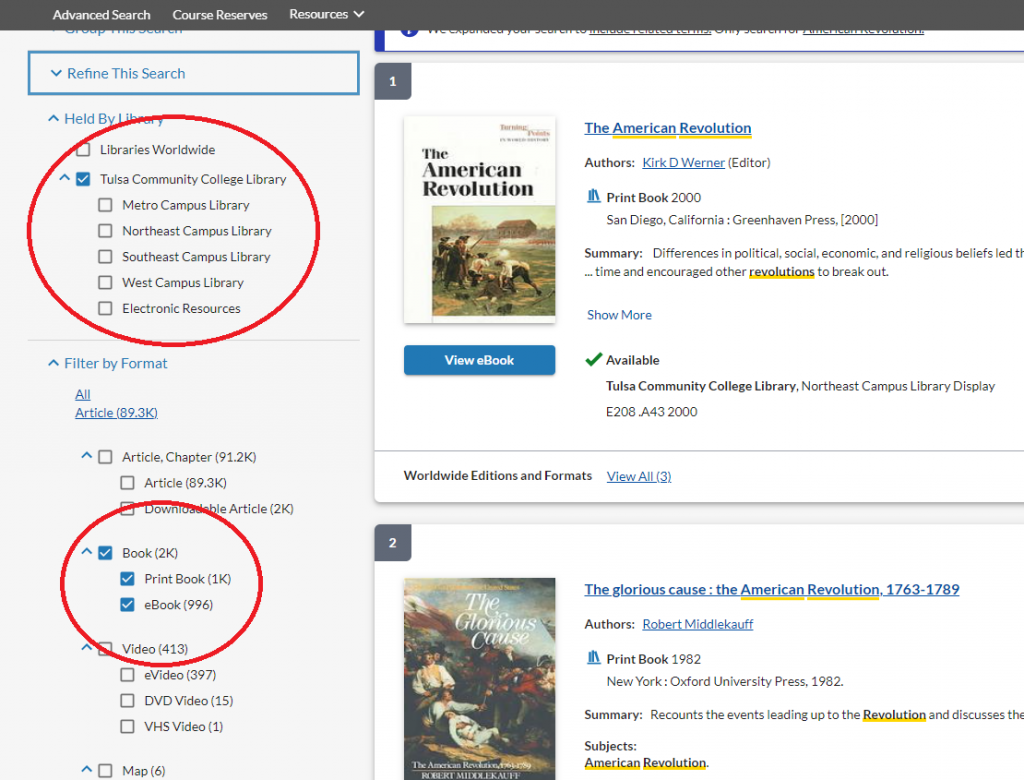42 Finding Your Books
Interpreting Your Search Results
After you identify two books that you think you could use, you will need to find those books in the library. Let’s take a closer look at the search results:

In the above image, we have limited our search results to “Tulsa Community College Library” and to “Books and eBooks” as our resource type. These active filters are on the left side of the above image. The top two results in the example are books that are available in the library. We can confirm that these are books by the “Book” label next to the image of the item in the search result. Below the book’s cover, there is another label indicating the book’s availability. You will also notice that while these are books, we have them available to read online as eBooks through the “View eBook” button. Both of these books are “Available,” meaning they should be in the library. You can tell in this search tool that the books are available because of the green checkmark. In some library search tools, there will be an “available” label. If the book is checked out, missing, or simply unavailable, you would see a red “X” or the label “unavailable.”
Call Numbers
The first book is called The American Revolution. According to the search tool at Tulsa Community College, it is available at their Northeast campus. At Oklahoma universities with big libraries such as the University of Oklahoma’s Bizzel Library, we would likely see on which floor this book is located.

After the location (Northeast Campus Library Circulation), you should see a set of numbers. These numbers are known as call numbers. Call numbers allow libraries to organize their resources on their shelves in a logical manner; that is, they will be shelved either numerically or alphanumerically (using letters and numbers) according to these call numbers. In the example above, the book’s call number is E208 .A43 2000. This means the library has the book shelved with other books where the call numbers begin with the letter “E”.
But why do some call numbers begin with letters while others start with numbers? It all depends on the system your library decides to use to organize their materials. For further explanation, see How Libraries Organize Materials.

